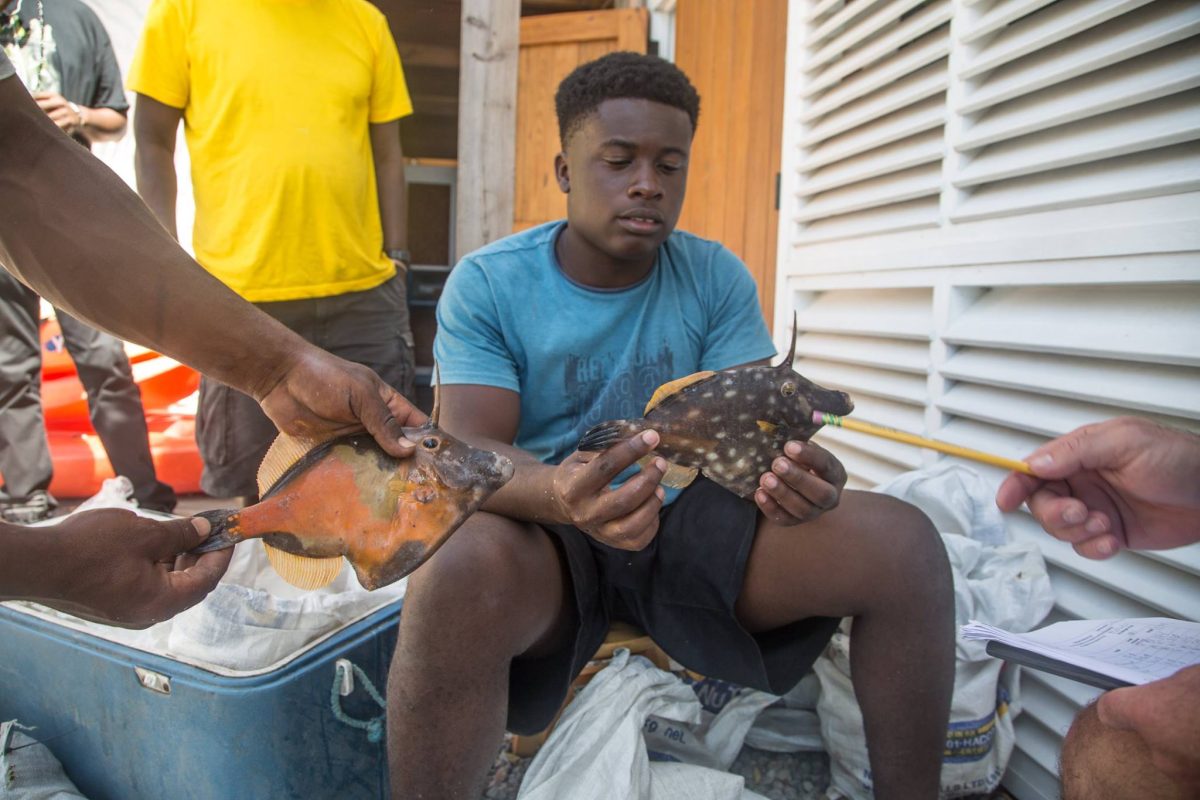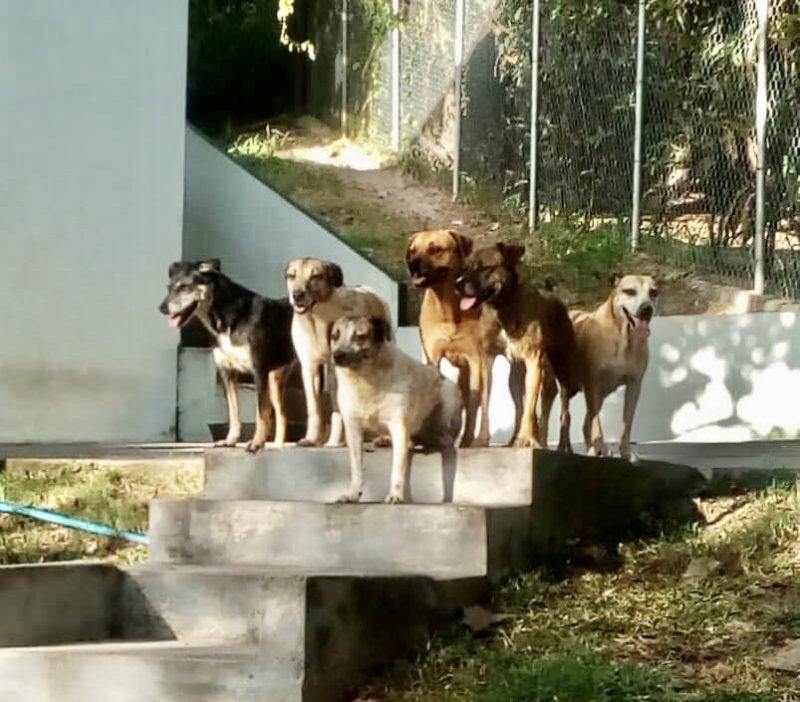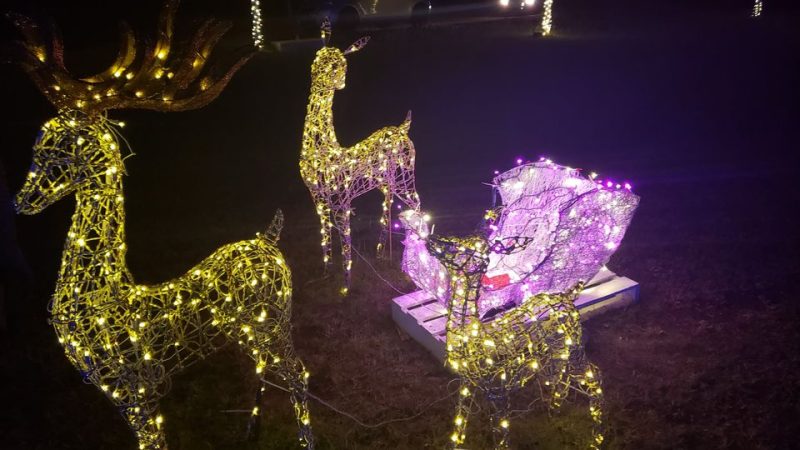For a small island, the ocean provides livelihoods, tourism, relaxation, and a sense of national pride for the people of Montserrat. But figuring out how to use these resources wisely whilst still supporting the people who love and benefit from the ocean is no easy task. The Government of Montserrat and countless individuals have been working for three decades to create a plan to sustainably and fairly manage the ocean resources of our waters. This work has made tremendous progress these past few years due to the dedication of our community and the launch of Blue Halo Initiative on Montserrat in 2015. Each week, I will be featuring an individual who has been working to build a more sustainable and abundant ocean future for Montserrat.
Keinan James was nine when he first picked up a fishing rod. Once only fishing for fun, he is now one of Montserrat’s active commercial fishers, helping to keep the sector alive for the future, and with greater consciousness and care for what is happening beneath the surface.
James was turned on to Blue Halo Montserrat through their collaboration with the Government of Montserrat’s Young Apprentice Programme (YAP) in 2018. The Blue Halo Initiative funded through the Waitt Institute, is focused on helping the island map out sustainable ways to use and protect the ocean and its sea life. Through a Memorandum of Understanding, a year-long pilot project: Sustainable fish trap demonstration and fisheries monitoring project was launched. This allowed young people who were under-employed to study sustainable fisheries science on island and encourage them to become future ocean ambassadors.

Keinan worked along-side three other young men to evaluate the benefits of using sustainable fish traps versus traditional traps. So first, they needed to build the traps. The traps were built with biodegradable panels that open to release fish if the trap is lost at sea. They also included escape gaps, which were rectangular openings in the trap that allowed small and thin fish to escape. Over the project life, they compared fish caught in the sustainable traps versus the traditional traps.
“The traps were set out in pairs. Every pair included one trap with escape gaps and one without, and they were placed a close distance of each other so we could analyze the difference in the catch. Over the course of the project 40 traps were deployed, 20 normal and 20 experimental with escape gaps. I think the new sustainable fish traps are a great idea because they allow the smaller fish to escape, grow, and reproduce to sustain the fish stocks for future generations,” Keinan explained.
During the second phase of the project, the apprentice collected fisheries landings data to help monitor and assess how much fish was being caught in Montserrat waters for market. “It was a great experience, since working with Blue Halo, my views on the ocean have changed greatly because now I see the ocean needs more protection as it is an important resource. I have also come to understand more of what fisher folk go through daily, such as how much they earn depends on how much and what they catch.”
Keinan’s dedication to the data project opened the door for Blue Halo to sponsor his participation, along with another young fisher Chase Buffonge, to spend three weeks on the SSV Corwith Cramer. The ship is a state-of-the-art 134-foot brigantine which served as their home, classroom, and laboratory as they worked as part of the crew to study the human impact on Caribbean coral reef ecosystems.
This was the first time he had ever been at sea for an extended period. “We would go days on end without seeing land. We visited Grenada and was in proximity of Trinidad and Tobago especially the oil rigs, St. Vincent and Grenadines, Montserrat and Barbuda. Everyone on board was divided into three groups as the ship has 24-hour operations. While the two groups rested, the other group was on watch” Keinan tells me.
The work study allowed Keinan to participate in the daily activities of steering, maintenance, cooking, collecting water samples from different depths, net dragging, animal samples, reef surveys and other types of research. “The aim was to study the impact of micro plastics, chemical pollution, and human waste on the reefs and the ocean. We also conducted reef surveys around the different islands we visited and compared the data,” he shared.
The groups also conducted deep sea tests of the seabed and the continental shelf. While the days were often tedious, James said his swimming skills greatly improved during his time at sea and his appreciation for the marine habitat and its connection to human prosperity deepened.
While Keinan has found regular work at the local hospital, he does consider himself a commercial fisher as he has regular customers who he delivers fish to, several times a month. “Right now, I use line and hook, but my goal is to have a boat of my own” he shared.
The experience and skills Keinan learned during his time on the Blue Halo Montserrat fisheries project has been transformative and he plans to do his part to care for the ocean and to start new traditions. “I can use my new fish trap making skills to teach others and maintain the island culture and heritage as every island makes their traps slightly different. I’ve grown a deep love for the ocean, as it is very important and provides a resource from which all of us benefit.”
Investing in local youth like Keinan is important to add to our understanding the importance of Montserrat’s reliance on and stewardship of marine resources. Since the launch of the Blue Halo Initiative in 2015, scientific data, along with community feedback was analyzed and brought to the community in a participatory process to design a marine spatial plan for Montserrat’s waters. After several years of work, a plan was selected by the Ministry of Agriculture, Lands, Housing and the Environment creating multi-use zones and marine protected areas that cover 33% of Montserrat’s Territorial waters. A plan has been approved by the cabinet, and now Montserrat’s communities wait for the plan to be implemented. Once a legal framework is implemented, in partnership with fisheries management, ocean ambassadors like Keinan will be key in promoting the benefits ocean planning to the people in his community.
In February 2015, the Government of Montserrat and the Waitt Institute signed a Memorandum of Understanding that launched Blue Halo Montserrat. The goal is to foster the sustainable, profitable, and enjoyable use of ocean resources for present and future generations. Over a five-year period, it has developed and drafted sustainable ocean policies and a marine spatial plan through a process that deeply engages stakeholders and is based on scientific, social, and economic data. Other partners of the Blue Halo Programme include the Ministry of Education, Youth Affairs and Sports, the Ministry of Agriculture, Lands, Housing and the Environment.
Discover more from Discover Montserrat
Subscribe to get the latest posts sent to your email.








